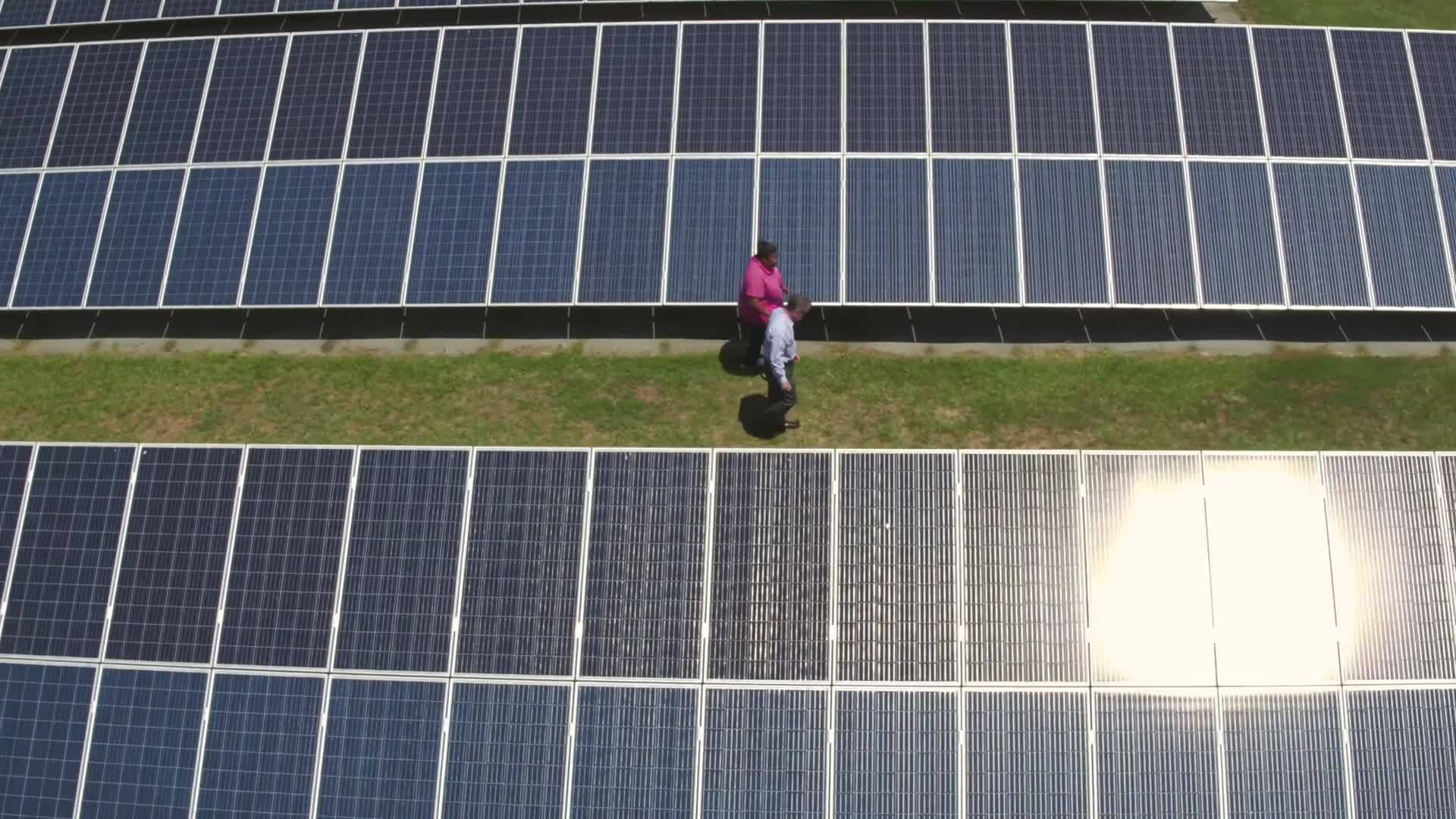Behind the Business: North Carolina’s Electric Cooperatives are Building a Brighter Future

Driven by a mission of exceptional service, North Carolina’s Electric Cooperatives are pursuing a vision to build a brighter future for rural North Carolina. Beyond providing electricity, each of the 26 not-for-profit cooperatives is investing in its communities and delivering new energy solutions to improve quality of life for co-op members in 93 of North Carolina’s 100 counties. The NC Chamber spoke to Nelle Hotchkiss, COO and senior vice president of association services for North Carolina’s Electric Cooperatives, about the company’s long-term roadmap – Brighter Future – for advancing energy innovation, sustainability, and continued community support to enrich the lives of the 2.5 million people they serve in rural communities from the mountains to the coast.
How is the state’s network of 26 electric cooperatives working together to achieve a brighter future?

Looking to the decade ahead and beyond, North Carolina’s Electric Cooperatives remain focused on providing electricity that is reliable, affordable, and environmentally responsible. To achieve this lowest-possible-cost, low-carbon future, we are working toward two voluntary sustainability goals: a 50 percent reduction in carbon emissions from 2005 levels by 2030 and net-zero carbon emissions by 2050.
Another major tenet of the Brighter Future vision is innovation, and we are pursuing new solutions that enhance service to our members and make the grid more reliable, efficient, and resilient. The Brighter Future we are building with our members also extends beyond power to include continued support for community. As member-owned, not-for profit, locally based utility providers, the electric cooperatives recognize that ongoing investments in education, economic development, and community enrichment will become even more important as we look to the years ahead.
Why are electric cooperatives pursuing this vision?
Our members’ needs and expectations form the bedrock of all future planning, and our members are telling us that they want reliable electricity, first and foremost, but they also want it to be affordable and sustainable. We also know that resilience is critical as our state remains vulnerable to hurricanes and storms, and we continue to proactively reduce disruptions and enhance our response measures when outages do occur. It is up to us as member-owned utilities to meet these expectations, and we succeed by engaging our members to better manage activity on the grid and introducing new technologies and energy innovation to our communities.
The Brighter Future plan also allows us to chart a thoughtful and concerted path forward as a cooperative network leading at the forefront of the changing energy landscape in North Carolina and across the nation. As we chart this course, we will uphold our founding mission by ensuring that the cost and pace of change leave no members behind.
How will you achieve your 2030 target for 50 percent reduction in carbon emissions (and net zero carbon emissions by 2050) while delivering reliable, affordable electricity?
We will continue to rely on emissions-free nuclear, an extremely reliable, safe, and affordable source of electricity that currently makes up more than half our power portfolio, along with natural gas, which can be dispatched quickly when needed, complementing the intermittency of renewable sources. We are also bringing more renewable energy resources online while investing in new grid technology, such as battery storage, to make renewables more versatile and reliable.
Both carbon reduction goals greatly rely on the advanced coordination of resources across the grid, as well as the pursuit of beneficial electrification (electrifying devices and processes as an alternative to fossil fuels and using electricity in new ways to derive far-reaching benefits) and cooperative innovation to make the electric grid as flexible and efficient as possible. Additionally, we will need to see the development of new innovative technologies, such as those used to capture carbon emissions, to fully achieve these goals.
Where are you now in achieving this goal? Has the pandemic caused any setbacks?
Our state’s co-ops have made great progress and are demonstrating leadership in developing innovative solutions, such as microgrids, that engage our members and are an important piece of a Brighter Future. Cooperatives have five microgrids in operation or under development in North Carolina, each providing numerous benefits including added resiliency, enhanced sustainability by utilizing solar and other renewable sources, and improved grid efficiency that helps make power more reliable and affordable for everyone.
We have also made significant progress in leveraging thousands of energy resources distributed across the electric grid, many of which stem directly from our members, like smart thermostats, solar, and electric vehicle chargers. We aggregate and coordinate these “edge-of-grid” resources through a newly implemented platform that uses the latest technology to deploy them in a way that provides value to our members at home or at work. This sophisticated platform also gives us unprecedented operational insights that allow us to be more responsive and provide a higher level of service.
The pandemic has not resulted in any specific setbacks in these efforts. However, it has underscored the need to ensure we are implementing forward-thinking solutions that maintain affordability and strengthen the areas we serve by providing rural communities the same opportunities and quality of life as urban counterparts.
How is your company advancing economic development throughout the communities you serve?
We have an aggressive economic development strategy focused on supporting existing agricultural operations and commercial and industrial businesses with reliability and resiliency solutions, loans for technology investments and grants for energy efficiency upfits and expanding renewables technologies. Additionally, we focus on recruiting new businesses and industries to cooperative communities.
In just the last five years, electric cooperatives have contributed to more than 100 economic development projects with $67 million in grants and loans. These projects have resulted in more than 5,000 jobs and over $1 billion in new capital investment in rural North Carolina.
Several of our electric cooperatives are committed to providing broadband access to unserved and underserved communities. We are also working to expand a network of rural electric vehicle charging stations that not only promote the environmental and cost savings benefits of driving electric but also enhance commerce, economic development, and tourism in co-op served communities across the state.
Why are the cooperatives’ local roots central to your work?
Electric cooperatives were formed by, are based in, and belong to the communities they serve. We are owned by and accountable to our members. This structure affords us unique opportunities to engage with local people, businesses, and community leaders to develop innovative solutions and meet changing needs. Our Brighter Future vision builds on this local commitment and the cooperative advantage. By leveraging existing low-carbon generation, investing in new resources, and coordinating new energy technology across the grid — all while staying focused on our members — we are making a brighter future a reality.
Behind each business in North Carolina are the ideas, partnerships, and people that fuel our state’s success. Behind each business is a story and a vision for the future. As the voice for business, the NC Chamber is committed to telling these stories and highlighting the organizations and people that keep our state moving forward. Behind the Business is a series of profiles featuring NC Chamber Cornerstone members doing great work in North Carolina. Interested in being featured? Contact communications@ncchamber.com.